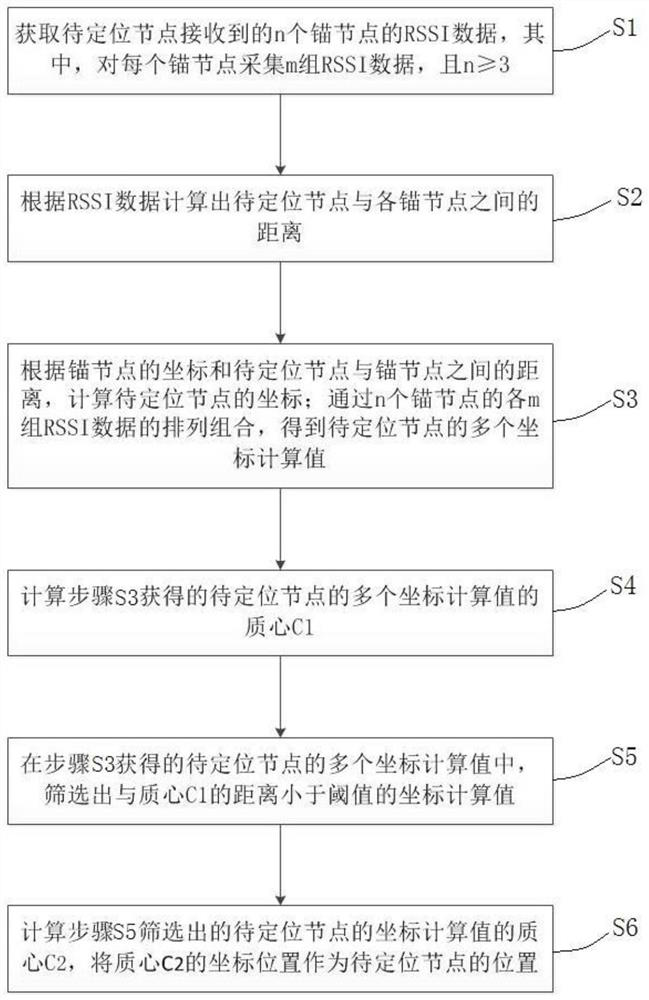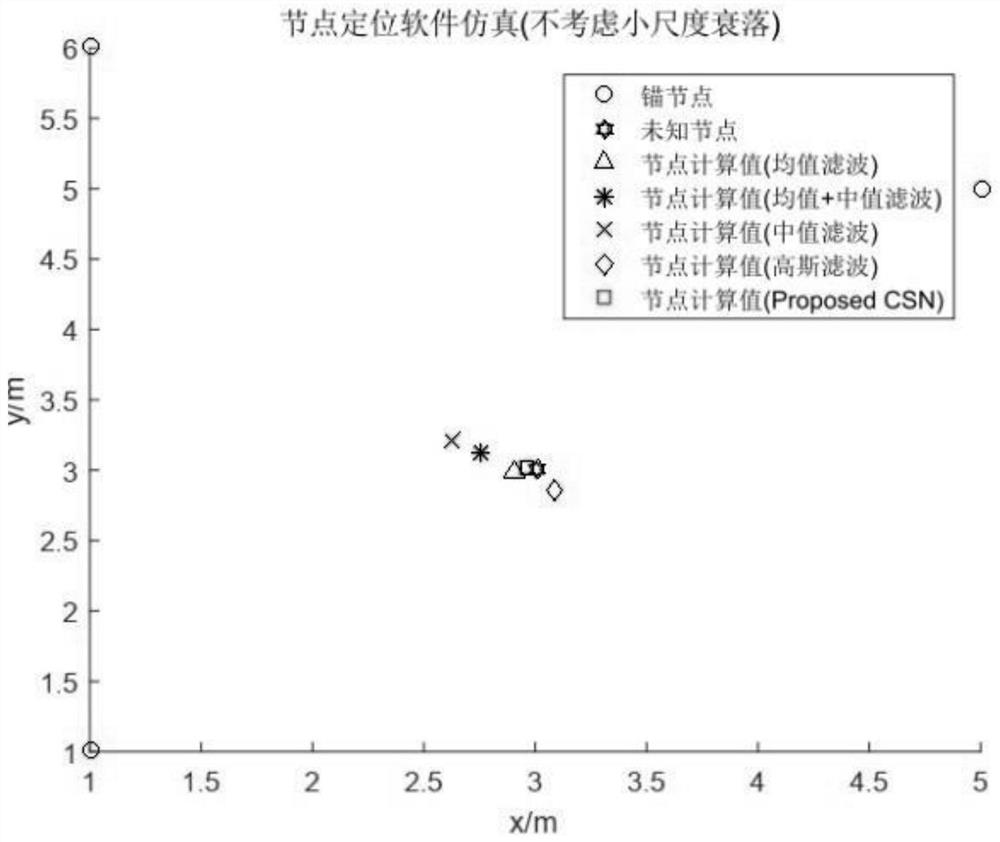Data processing method for wireless sensor network node positioning
A technology of wireless sensors and network nodes, which is applied in the directions of location-based services, network topology, wireless communication, etc., can solve the problems of location errors of nodes with positioning, affecting positioning accuracy, and costing space overhead, achieving good accuracy and simple calculation. , the effect of small time and space cost
- Summary
- Abstract
- Description
- Claims
- Application Information
AI Technical Summary
Problems solved by technology
Method used
Image
Examples
Embodiment 1
[0056] like figure 1 As shown, a data processing method for wireless sensor network node positioning according to a preferred embodiment of the present invention includes the following steps:
[0057] S1. Acquire RSSI data of n anchor nodes received by the node to be located, wherein m groups of RSSI data are collected for each anchor node, and n≥3;
[0058] S2. Calculate the distance between the node to be located and each anchor node according to the RSSI data;
[0059] S3. Calculate the coordinates of the node to be located according to the coordinates of the anchor node and the distance between the node to be located and the anchor node; obtain multiple coordinates of the node to be located through the arrangement and combination of each m group of RSSI data of the n anchor nodes. value;
[0060] S4, calculating the centroid C of the multiple coordinate calculation values of the nodes to be located obtained in step S3 1 ;
[0061] S5. From the plurality of coordinate...
Embodiment 2
[0066] The difference between this embodiment and the first embodiment is that, on the basis of the first embodiment, this embodiment further describes step S3 and step S6.
[0067] In this embodiment, in step S3, the coordinates of the node to be located are calculated by the ranging positioning method, that is, the coordinates of the node to be located are obtained according to the distance between the anchor node and the node to be located. Specifically, the present embodiment calculates the coordinates of the node to be located according to the three-sided positioning method, and obtains The calculated coordinates of the nodes to be located. Optionally, n=3, m=10 in this embodiment; that is, this embodiment acquires RSSI data for three anchor nodes, acquires 10 sets of RSSI data for each anchor node, and obtains 10 3 The calculated coordinates of the nodes to be located.
[0068] In addition, in this embodiment, in step S3, the centroid C is 1 is calculated as follows:...
Embodiment 3
[0081] The difference between this embodiment and the second embodiment is that, on the basis of the second embodiment, this embodiment further describes step S5.
[0082] In this embodiment, in step S5 , the threshold value is less than half of the distance between the two coordinate calculated values that are farthest apart from among the coordinate calculated values of the nodes to be located obtained in step S3 . In order to ensure the positioning accuracy, the selection of the threshold as the basis for the selection of coordinate calculation values is very important. If the threshold is too large, the effect on noise will not be significantly reduced; if the threshold is too small, the error of the second centroid calculation will be too large, and new errors will be introduced.
[0083] Specifically, the threshold value of this embodiment is a quarter of the distance between the two coordinate calculation values that are farthest apart among the coordinate calcu...
PUM
 Login to View More
Login to View More Abstract
Description
Claims
Application Information
 Login to View More
Login to View More - R&D Engineer
- R&D Manager
- IP Professional
- Industry Leading Data Capabilities
- Powerful AI technology
- Patent DNA Extraction
Browse by: Latest US Patents, China's latest patents, Technical Efficacy Thesaurus, Application Domain, Technology Topic, Popular Technical Reports.
© 2024 PatSnap. All rights reserved.Legal|Privacy policy|Modern Slavery Act Transparency Statement|Sitemap|About US| Contact US: help@patsnap.com










